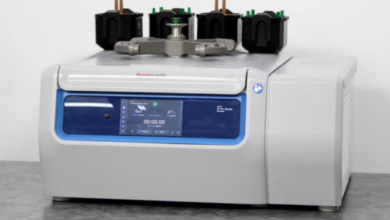
Medical Software for Healthcare Providers: Enhancing Care Through Technology
The world of healthcare has undergone a remarkable transformation over the past few decades, and central to this evolution is the role of technology. Medical software has become an indispensable part of modern healthcare systems, assisting providers in delivering faster, safer, and more efficient care. It enables hospitals, clinics, and practices to manage patient data, streamline workflow processes, support clinical decisions, and ensure compliance with continually changing medical regulations. For healthcare providers, medical software is not just a convenience—it is a necessity for improving care quality and achieving better health outcomes.
The Importance of Medical Software
Healthcare involves vast amounts of data including patient records, diagnostic reports, lab results, prescriptions, billing information, and clinical notes. Managing all this manually is both time-consuming and prone to errors. Medical Software for Healthcare Providers automates these processes, ensuring accuracy and accessibility. By digitizing administrative and clinical functions, it helps physicians and nurses focus more on patient care rather than paperwork. Moreover, many systems come with analytical tools that allow clinicians to track trends, forecast health patterns, and personalize treatment plans.
In an era where patient expectations are rising and healthcare costs are under scrutiny, Medical Software for Healthcare Providers provides a practical solution. It supports scalability, enhances communication among care teams, strengthens data security, and reduces administrative burdens. For healthcare providers, adopting the right software often translates into measurable increases in efficiency and patient satisfaction. \
See also: Why Dallas Residents Are Switching to Recurring House Cleaning and Pest Control Services
Types of Medical Software
Electronic Health Records (EHRs)
EHRs are digital versions of paper charts, storing comprehensive patient data such as medical history, allergies, immunizations, and lab results. They enable seamless data sharing between healthcare professionals and institutions, fostering coordinated care and reducing duplication of tests or procedures.
Practice Management Software (PMS)
This software assists healthcare organizations with administrative and financial activities like appointment scheduling, billing, and insurance claims. It simplifies front-desk operations and improves revenue cycle management.
Medical Billing Software
Designed to handle the complex process of insurance coding, claims submission, and payment tracking, this software minimizes billing errors and helps providers receive reimbursements more efficiently.
Telemedicine Platforms
These tools enable virtual consultations between patients and physicians, breaking down location barriers and providing access to care for remote or underserved populations. Especially during the COVID-19 pandemic, telehealth solutions became a cornerstone of modern healthcare delivery.
Lab Information Systems (LIS)
Used in laboratories, these systems track specimens, manage workflow, and ensure accurate reporting of test results. They integrate with EHRs to provide clinicians with real-time diagnostic data.
Radiology Information Systems (RIS)
This category is specific to imaging departments, managing patient scheduling, image storage, and report distribution. They often work in coordination with Picture Archiving and Communication Systems (PACS), which store and retrieve digital images.
Clinical Decision Support Systems (CDSS)
These systems use data analytics, algorithms, and artificial intelligence to assist healthcare professionals in making clinical decisions based on evidence and patient data trends.
E-prescribing Software
This tool allows clinicians to electronically send prescriptions to pharmacies, minimizing errors caused by illegible handwriting and improving medication adherence.
Benefits for Healthcare Providers
Medical software benefits healthcare providers across multiple dimensions. First, it improves workflow efficiency. Tasks that once required manual entry and verification—such as patient registration or billing—can now be automated, saving time and reducing human error. Second, data accuracy improves dramatically. Since all information is digitally stored and regularly updated, there is a reduced risk of misplacing records or misinterpreting results.
Medical software also facilitates better clinical decision-making. With an integrated system, providers can access complete patient histories and test results instantly, leading to more informed diagnoses and treatment plans. In addition, predictive analytics and machine learning modules can identify potential health risks early, allowing for preventive measures.
Another major advantage is enhanced patient engagement. Many platforms include patient portals where individuals can access their health records, view lab results, request appointments, and communicate directly with providers. This transparency strengthens trust and encourages patients to take a more active role in managing their health.
From a financial perspective, medical software contributes to cost reduction and increased revenue. Automated billing systems minimize claim rejections and administrative expenses, while optimized scheduling reduces appointment gaps. Compliance features also ensure adherence to regulations such as HIPAA, protecting institutions from potential penalties.
Implementation Challenges
While medical software delivers immense value, implementation can pose significant challenges. The initial cost of purchasing and integrating such systems can be high, particularly for small clinics. Staff training is another critical factor—doctors, nurses, and administrative employees need time to adapt to new tools, which may temporarily affect productivity.
Interoperability is also a common pain point. Not all software systems communicate well with each other, which can cause data silos and frustration among users. Healthcare institutions must ensure that their chosen platforms support established data exchange standards like HL7 or FHIR. Additionally, security remains a top priority, as medical data breaches can have devastating legal and ethical consequences.
To mitigate these challenges, healthcare providers often rely on phased implementation, starting with core functions and gradually expanding system capabilities. Partnering with reputable vendors that offer robust customer support and continuous updates is also crucial.
The Role of Artificial Intelligence and Analytics
As technology continues to evolve, artificial intelligence (AI) and machine learning are taking medical software to new heights. AI-driven diagnostic tools help identify early signs of disease, while predictive analytics assist in anticipating patient needs and optimizing resource allocation. Machine learning models can personalize treatment recommendations based on historical patient data and global medical research.
Data analytics also plays an increasingly critical role. By analyzing patterns across vast datasets, healthcare providers can monitor population health trends, reduce readmission rates, and improve preventive care strategies. These capabilities turn data into actionable insights—a core goal of modern healthcare technology.
The Future of Medical Software
Looking ahead, the future of medical software lies in integration, intelligence, and patient-centered design. Cloud computing is already making it easier for healthcare facilities to access and share data securely without heavy on-premise infrastructure. Interoperable systems will pave the way for a truly connected healthcare network, making information flow seamless across hospitals, labs, pharmacies, and patients.
Artificial intelligence will continue to refine diagnostic accuracy, while remote monitoring and wearable devices will extend care beyond the clinic. Patient empowerment will remain at the forefront, supported by mobile applications that promote wellness and self-management. For healthcare providers, embracing these technologies will not only enhance medical practice but also redefine the very nature of patient care.
Conclusion
Medical software has become the backbone of modern healthcare systems. By simplifying administrative processes, supporting clinical decisions, and elevating patient engagement, it transforms how providers deliver care. Although challenges such as cost, interoperability, and security persist, the long-term benefits far outweigh these hurdles. As technology advances, medical software will continue to evolve—bridging gaps, saving lives, and enabling a more connected and efficient healthcare future.




